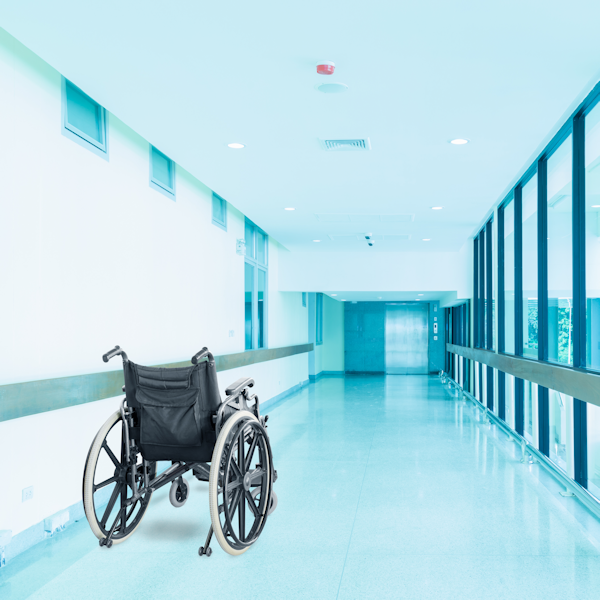Transporting Patients
Possible Solutions
- Use smaller handheld equipment to perform bedside studies, whenever it is available and appropriate.
- Use mechanical powered assist devices whenever large or heavy patients or equipment must be moved for longer distances.

Aisles should be kept open and free of extraneous items such as gurneys, wheelchairs or other carts.
- Ensure equipment has the appropriate wheels (casters) to facilitate safe transport over all flooring and room conditions.
- Generally, wheels that have a larger diameter, a narrower width and are made of a harder material will traverse gaps and changes in flooring more easily, reducing the necessary push force. Swivel casters should be used when maneuvering in tight locations. Note: At least one set of casters should be lockable to provide improved inline steering.
- Controls for equipment should be easily accessible without bending or reaching. These may include controls that allow selection between two-wheel, four-wheel and braked positions. Central locking is preferable.
- Aisles should be kept open and free of extraneous items such as gurneys, wheelchairs or other carts.
- Sonographers should be trained to use correct body mechanics when moving patients, wheelchairs, beds, stretchers and ultrasound equipment. Correct body mechanics suggestions may include:
- Push instead of pull. Lean slightly into the load to let your body weight assist with force exertion.
- Push at about chest height.
- Push smoothly and slowly to start.
- Do not bend or twist while exerting force.
- Keep wrists straight.
- Keep elbows close to the body.
Knowledge Check Choose the best answer for the question.
1-3. When moving equipment, you should always _____.
You forgot to answer the question!
